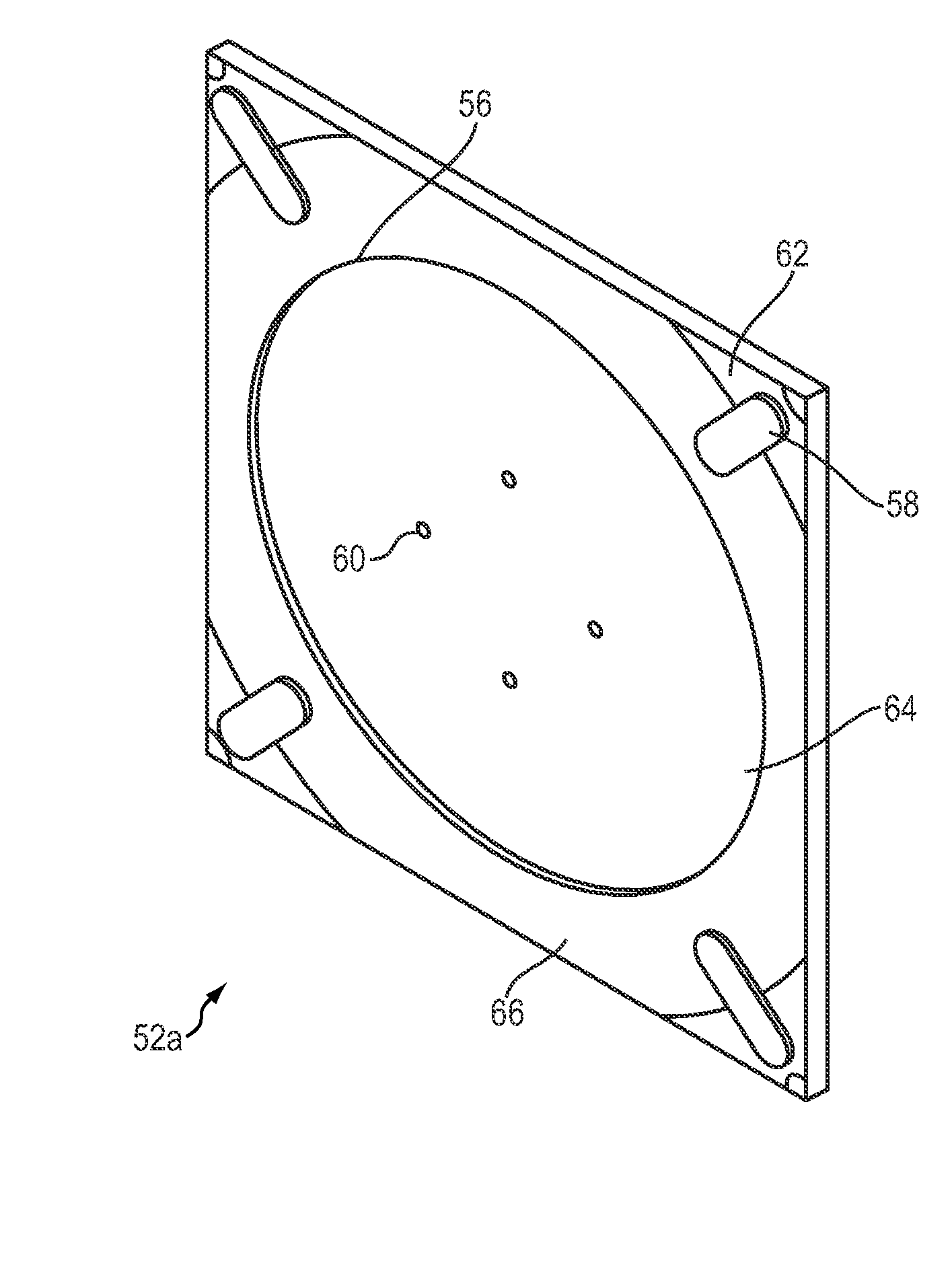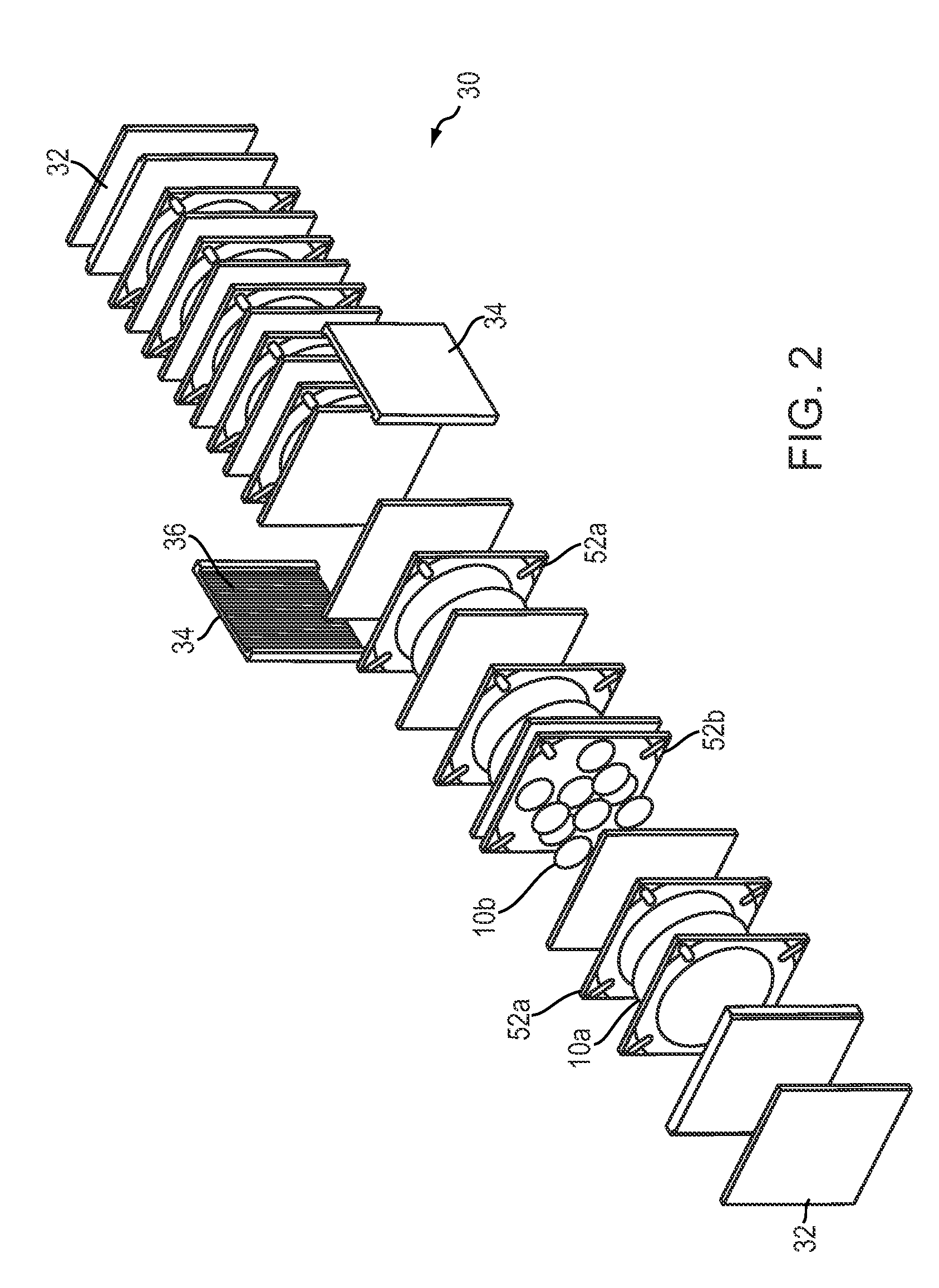Method and Apparatus for Manufacture of Via Disk
a technology of via disk and manufacturing method, which is applied in the manufacture of cables/conductors, instruments, coatings, etc., can solve the problems of inability to maintain sufficient planarity and surface parallelism, difficulty in maintaining electrical continuity and supporting high-performance signals, and multi-layer substrates using cast ceramics or “green tapes”. achieve good planarity, maintain dimensional control, and ensure the effect of continuity
- Summary
- Abstract
- Description
- Claims
- Application Information
AI Technical Summary
Benefits of technology
Problems solved by technology
Method used
Image
Examples
example
[0044]A Ø 100 mm AVD was manufactured in accordance with the teachings herein, specifically, a drilled ceramic disk was placed in a mold and heated to about 700° C. and pressurized with A356.2 aluminum alloy infiltrant to a pressure of about 1000 psi for approximately 30 minutes. The mold was then allowed to cool at ambient pressure until it reached ambient temperature. After processing to remove excess material, various tests were performed to determine performance characteristics of the AVD. The results of these tests are presented below.
[0045]Since the via forms part of the signal path, it is generally desirable that the via displays a low resistance value. To test resistance of the filled vias, five vias were chosen for measurement at various locations on the prepared sample. Resistance was measured at both 1 and 5 volts. The results are depicted in Table 1, below.
TABLE 1Via Resistance Test ResultsTest PointSourceSourceMeterResultsNo.Set VoltCurrentmilliVoltsΩ× 10−3150.10.1251.2...
PUM
| Property | Measurement | Unit |
|---|---|---|
| diameter | aaaaa | aaaaa |
| diameter | aaaaa | aaaaa |
| diameter | aaaaa | aaaaa |
Abstract
Description
Claims
Application Information
 Login to View More
Login to View More - R&D
- Intellectual Property
- Life Sciences
- Materials
- Tech Scout
- Unparalleled Data Quality
- Higher Quality Content
- 60% Fewer Hallucinations
Browse by: Latest US Patents, China's latest patents, Technical Efficacy Thesaurus, Application Domain, Technology Topic, Popular Technical Reports.
© 2025 PatSnap. All rights reserved.Legal|Privacy policy|Modern Slavery Act Transparency Statement|Sitemap|About US| Contact US: help@patsnap.com



